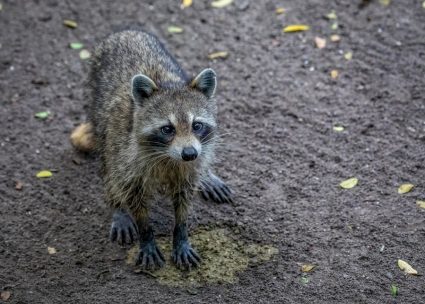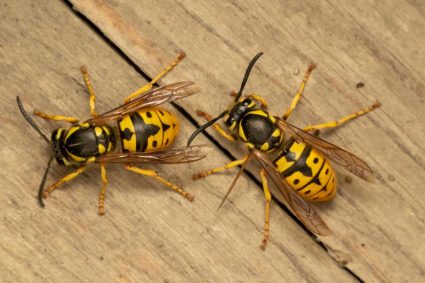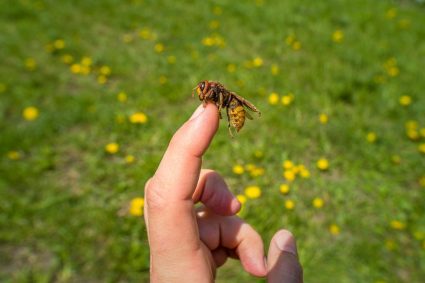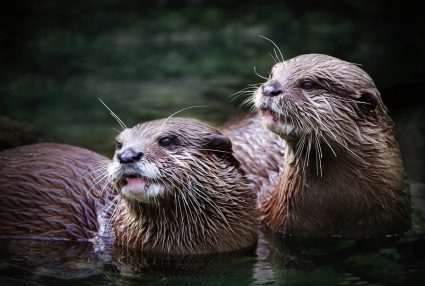
Skunks are notorious for their unpleasant odor and can create havoc in your yard by digging for insects and grubs. Therefore, it’s essential to take measures to keep skunks away from your property. This comprehensive guide will provide you with a detailed plan on how to deter skunks and prevent them from nesting on your property.
To keep skunks away, eliminate their food and water sources by securing trash cans, feeding pets indoors, and cleaning up birdseed and fallen fruits. Install a sturdy fence that extends 1-2 feet below the ground to prevent skunks from digging into your yard. Use odor-based repellents, install motion-activated lights, and seal off potential hiding places. Plant skunk-repellent plants and maintain a clean yard. If necessary, contact a professional wildlife control company.
Why Do Skunks Invade Your Property?
Skunks are primarily attracted to food, water, and shelter. They are opportunistic omnivores and are drawn to garbage, pet food, birdseed, and fruits or vegetables from gardens. They also seek shelter in dark, warm areas like burrows from other animals or under structures like decks or sheds. Water sources like ponds, pools, or hoses can also be a skunk magnet.
Effective Deterrent Methods
Using Repellents
Skunks have a keen sense of smell, so using odor-based repellents can be very effective. Homemade pepper spray, made from boiling a chopped onion, jalapeno pepper, and cayenne pepper in water, can be sprayed around the areas you want to protect. You can also use commercial repellents available at garden centers and big-box stores. However, remember that the effectiveness of these repellents can vary depending on specific conditions.
Installing Fences
Skunks are poor climbers but good diggers. Installing a sturdy fence around your property that extends 1-2 feet below the ground can prevent skunks from entering your yard.
Motion-Activated Lights
Skunks are nocturnal creatures and prefer to avoid bright light. Installing motion-activated lights in your yard can help keep them at bay.
Removing Food Sources
Secure your trash cans, feed your pets indoors, and clean up birdseed and fallen fruits to eliminate potential food sources.
Sealing off Hiding Places
Use chicken wire or wire mesh to close off small areas under decks or porches, and remove piles of wood, compost, or junk that could provide shelter for skunks.
Planting Skunk-Repellent Plants
Certain types of plants, like Crown Imperial, Summer Squash, and Stinging Nettle, can help repel skunks due to their strong odors or irritating leaves. Landscaping techniques like maintaining a clean yard, eliminating standing water, and installing lights can also discourage skunks.
Safe and Humane Repellents
Citrus peels, ammonia-soaked rags, and peppermint oil are all safe and humane methods to keep skunks away. Installing lights and fencing are also effective deterrents.
Protecting Your Pets
To protect your pets, keep them indoors at night, accompany them during nighttime outings, and maintain a clean yard. Natural repellents can also help keep skunks away from your property.
Dealing with a Skunk Encounter
If you encounter a skunk, stay calm, and observe the skunk’s behavior. Remove attractants and block access to potential dens. If necessary, contact a professional wildlife control company.
Preventing Skunks from Nesting
To prevent skunks from nesting on your property, remove attractants, install lights, cover garbage and recycling bins, eliminate natural food sources, install fencing, and use repellents.
Remember, skunks are generally docile animals and can be beneficial by eating pests like insects and rodents. By following these steps, you can coexist peacefully with these creatures while keeping your property safe and odor-free.
Frequently Asked Questions
Can skunks be harmful to humans?
While skunks are generally not aggressive, they can spray a foul-smelling liquid when they feel threatened. This spray can cause temporary blindness and nausea in humans. Additionally, skunks can carry diseases like rabies, so it’s best to avoid close interactions.
How far can a skunk spray?
Skunks can spray their defensive odor up to 10 feet. However, under exceptional circumstances, the spray can reach up to 20 feet.
How long does skunk odor last?
If not treated, skunk odor can last for weeks. The smell is notoriously difficult to remove and may require multiple treatments with specialized cleaning solutions.
What are the signs of a skunk infestation?
Signs of a skunk infestation can include foul odors, holes dug in your yard, overturned trash cans, and skunk sightings, especially during the evening and night.
Are there any natural predators of skunks?
Skunks have few natural predators due to their defensive spray. However, large birds of prey like owls, hawks, and eagles are known to prey on skunks. Coyotes, bobcats, and cougars may also occasionally attack skunks.
Can skunks climb trees or fences?
Skunks are not good climbers. They prefer to stay on the ground and dig for food and shelter. Therefore, a sturdy fence that extends below the ground can be an effective deterrent.
What should I do if my pet gets sprayed by a skunk?
If your pet gets sprayed by a skunk, try to keep them outside to prevent the smell from spreading indoors. Use a skunk odor remover or a homemade solution of hydrogen peroxide, baking soda, and dish soap to wash your pet. Be sure to check with a vet before using any home remedies.
What is the lifespan of a skunk?
In the wild, skunks typically live for about 2-4 years. In captivity, they can live up to 10 years.
What do skunks eat?
Skunks are omnivores. They eat a variety of foods including insects, small rodents, eggs, fruits, berries, nuts, and garbage.
How many babies do skunks have at a time?
Skunks typically have one litter per year with around 4-6 babies, known as kits. The kits stay with their mother until they are ready to establish their own territory.












